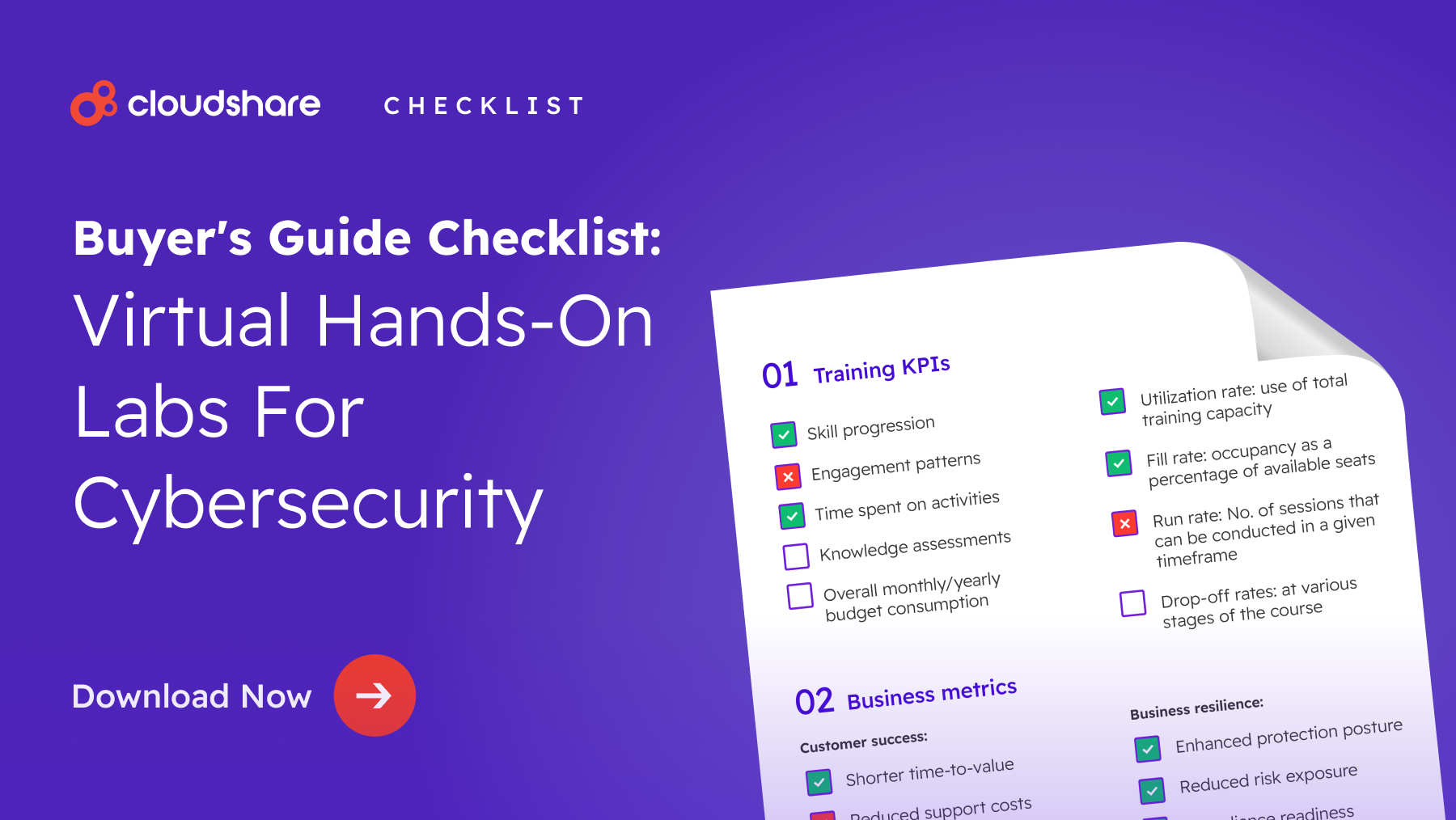
Anyone who says education can’t be all fun and games clearly hasn’t been paying attention. Whether for customer onboarding or employee training, gamification has many benefits. We’re going to go over a few of them today, then discuss why gamification and virtual labs are a great match.
Let’s start by exploring what gamification is and why it matters.
What is Gamification in Training?
Gamification incorporates design elements from video games and other forms of interactive media to create a more engaging and interesting learning experience. Some common gamification techniques include leaderboards, unlocks, progress points, and achievement badges. Some gamified training even takes things a step further, allowing participants to create customizable avatars and interact with a digital worldspace.
Why is Gamification Important?
Boredom simply isn’t conducive to education. If your training content is dry, static, and generic, most people aren’t going to want to sit through it. Those that do suffer through the experience probably aren’t going to remember much.
Whether you’re developing an employee onboarding program, creating a customer education initiative, or managing a certification course, your materials need to be compelling. Using gamification for learning can help a great deal in that regard. Gamification also offers a ton of advantages for both your organization and your trainees.
What Are the Benefits of Creating a Gamified Experience?
Right, we know gamification makes training more compelling. But what exactly does that mean? Below, you’ll find five of the most significant benefits to gamifying your training content.
Engagement
For most people, playing a game will always be more fun than rote memorization. Because gamified learning experiences are more interesting and enjoyable, it’s easier to find the motivation to complete them. Participants might know they’re here to learn, but you’re letting them do so in a way that’s actually fun.
This is especially true where customer education is concerned.
Learning and Retention
Gamified training has been shown on more than one occasion to improve learning and retention. You don’t need to simply take our word for it, though. A survey by recruitment platform Zippia found that gamification can increase employee skill retention by as much as 40%. Moreover, companies that use gamification are found to be up to seven times more profitable than those that don’t.
Interactivity
Hands-on training is and always will be more effective than passive learning. That’s because rather than simply staring at static words and pictures on a screen, participants are fully immersed in the training content. This lets them “learn by doing,” so to speak, while at the same time developing and applying practical knowledge and skills.
Collaborative Learning
Combining gamification with social learning can be incredibly effective, especially if you introduce a bit of friendly competition. Suddenly, you don’t just have a bunch of people learning your materials in isolation. You’ve got them competing against each other — or better yet, organizing themselves into opposing teams.
Satisfaction and Loyalty
Circling back to the Zippia survey, 95% of employees said that they prefer a gamified work experience, and 78% feel that gamification in recruiting makes a company or position more desirable. A gamified workplace has also been shown to increase employee happiness by as much as 89%, while 69% of people indicated that they’d stay at a company for more than three years if it used gamification in the workplace. But gamification doesn’t just increase productivity and job satisfaction — it also helps you build stronger customer relationships.
By incorporating elements of gamification into your customer education initiatives, you can potentially improve both customer satisfaction and brand loyalty. Customers and prospects are far more likely to engage with your brand if it’s enjoyable to do so. And they’re far more likely to view you in a positive light if you provide them with interesting and entertaining educational content.
How Can Virtual Labs Support Gamification?
So how do gamification and virtual training relate to each other, exactly?
In quite a few ways. First and foremost, virtual training labs are more or less the foundation of most gamified training, especially in the software-as-a-service market. The fact is that most of the design elements incorporated by a gamified strategy only really work in a digital medium.
Some of them, like avatars and an interactive virtual space, would be outright impossible.
There’s another much more exciting reason, too. Virtual reality and augmented reality have both come a very long way over the past few years. Before long, we could very well see fully immersive virtual classrooms — a new frontier for corporate learning and development, and one with absolutely immense potential.
Explore More Engagement Strategies for Online Learning
Now that you’ve got a general idea of how gamification and virtual learning fit together, let’s expand our scope a bit. Gamification isn’t the only way to improve the learning experience, after all. Have a look at 7 Effective Methods for Increasing Engagement in Online Learning.




